Patient Profile
The patient, a 52-year-old Caucasian female, presented with complaints of sensitivity to cold, and a need for a cleaning.
Based on subjective data, the patient’s medical and social history reveals no allergies. The patient states that she did not take the medications and was not hospitalized. The patient states that she does not consume alcohol, drugs, or tobacco.
Vitals: BP reading is 117/77, and Pulse is 73, corresponding to normal. ASA-1.
According to the patient’s dental history, the patient uses a manual toothbrush with medium bristles in a circular motion twice a day, using Crest Total toothpaste, and flosses once daily. The patient uses Crest mouthwash 1-2 times a day and doesn’t clean her tongue.
Clinical Findings
Based on objective data, extraoral examination revealed a unilateral click on the left side of the TMJ. Intraoral findings include bilateral line Alba, a white coating on the dorsal surface of the tongue, and a traumatic ulcer on the tip surface of the tongue.
The patient’s dental charting indicated multiple dental concerns: Occlusion right side class 2 and left side class 3, Overjet-4mm, and Overbite-20%. The tooth #5 shows extrusion with gingival cleft, and mild attrition of teeth #6 and 7, erosion of teeth #8 and #9, abfraction of teeth #20 and 21, enamel broken on tooth #26-D, overhang on tooth #31-D. Pt has cantilever bridge #13-14. Caries activity includes teeth #32-B class-5 and #20-D. Mobility class-1 was observed on teeth #23,24,25. Teeth missing due to complications of caries #3, 13, 15, 16, 17, 18, 19, 28, 29.
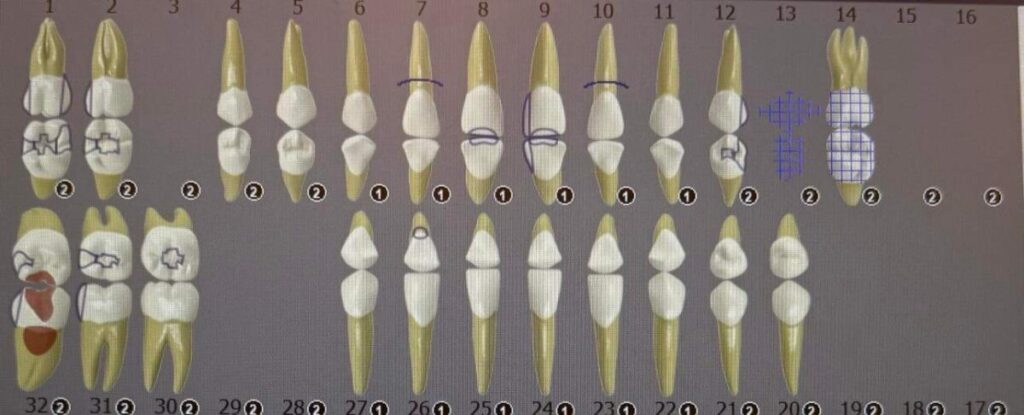
The radiographic findings after exposure to PANO and HBWs reveal a horizontal bone loss of 15%, No periapical or jaw bone abnormalities were noted.
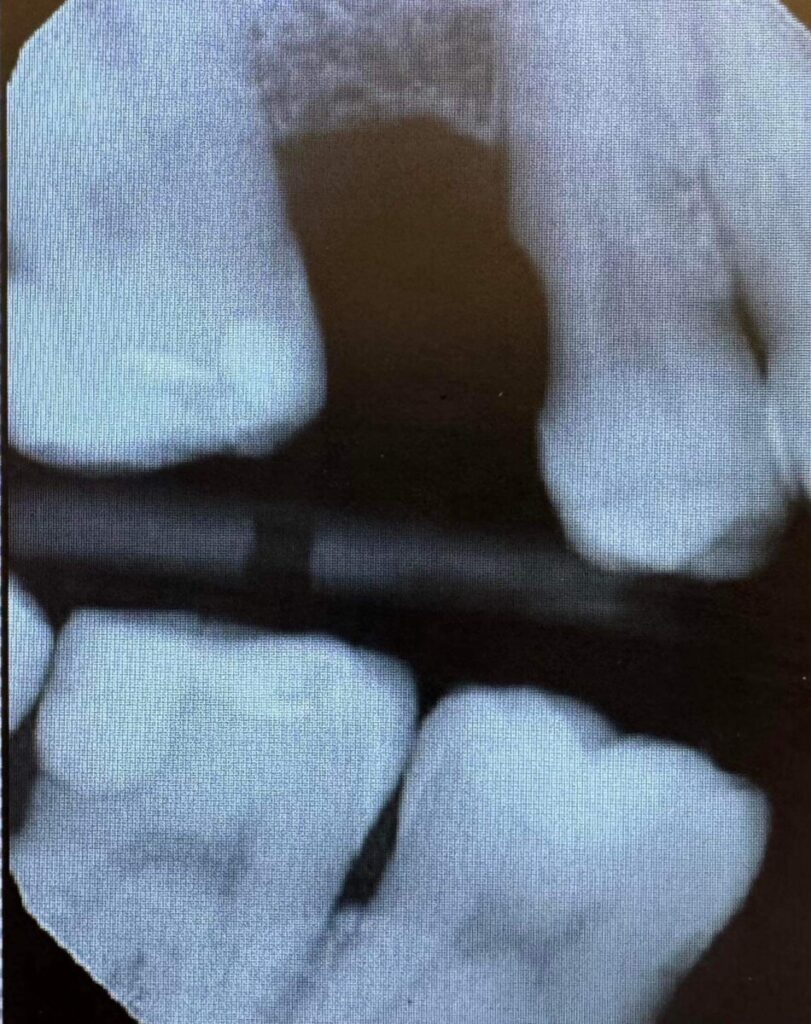
Before treatment.
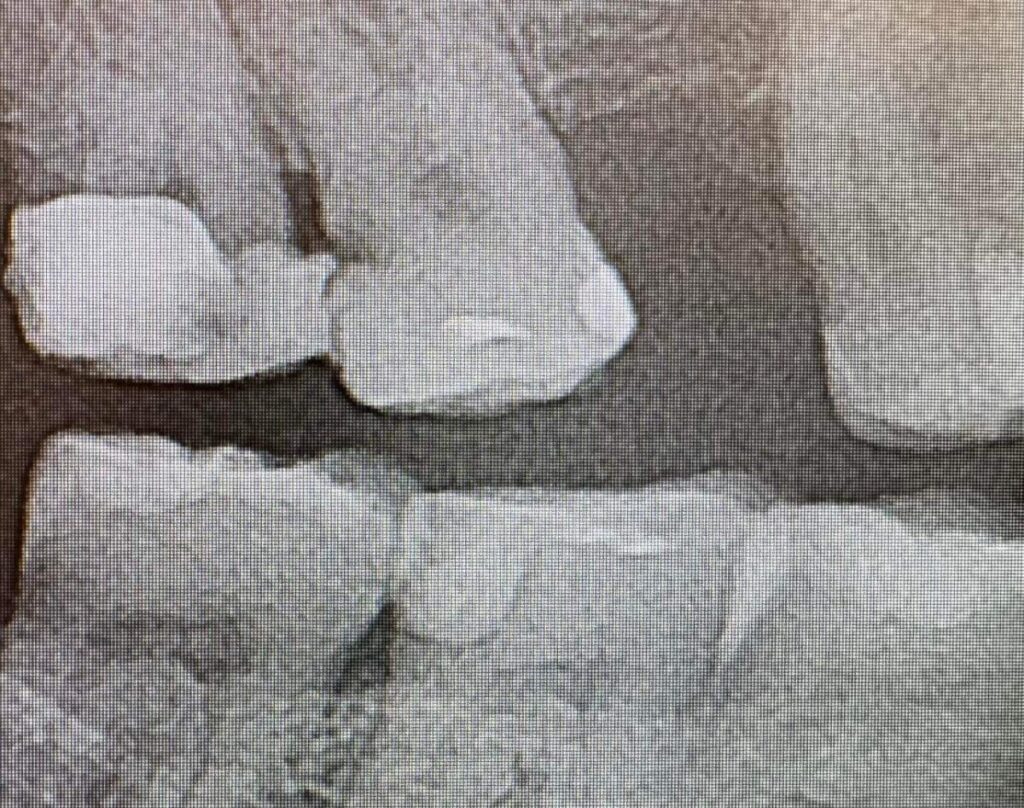
After treatment.
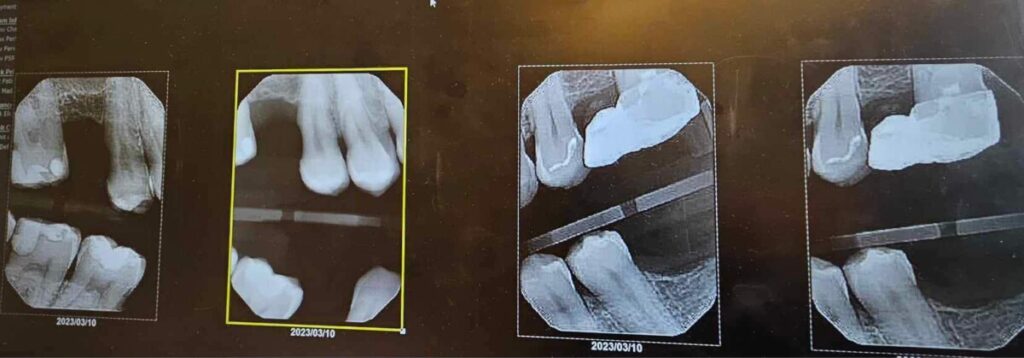
Bite wings images.
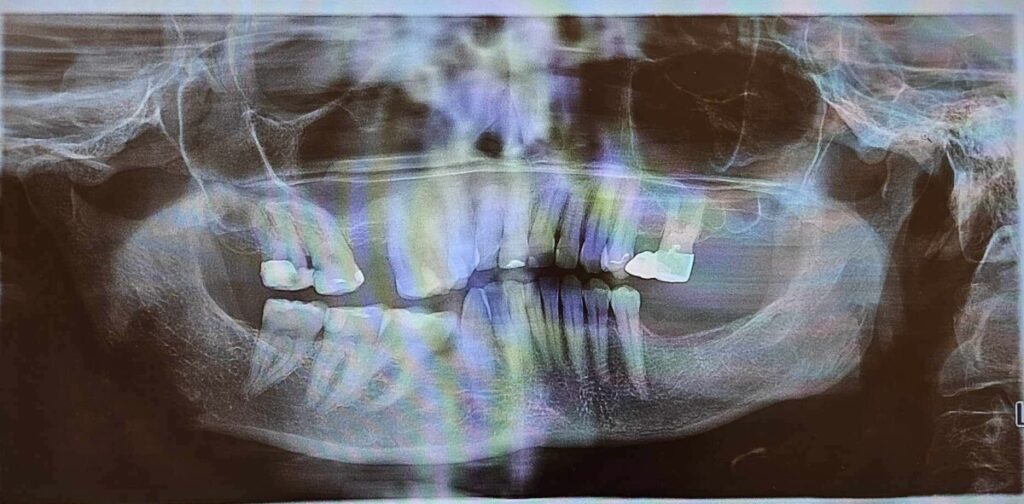
Panoramic image.
The patient’s periodontal assessment revealed that the gingival margin was localized red in color, rolled in shape, shiny, and non-stippled in texture, with a non-resilient consistency in the anterior sextants. In the posterior sextants, the localized gingival margin appeared pale pink in color, blunted in shape, and leathery in consistency. Generalized moderate marginal gingival inflammation was observed.
Perio charting of the patient detected generalized pocket depths ranging from 2-6 mm and localized gingival recession of 1-3 mm. Localized moderate bleeding on probing (BOP) was noted. Moderate supragingival calculus was localized on the lingual surfaces of anterior teeth, and localized subgingival calculus was present in both anterior and posterior sextants.
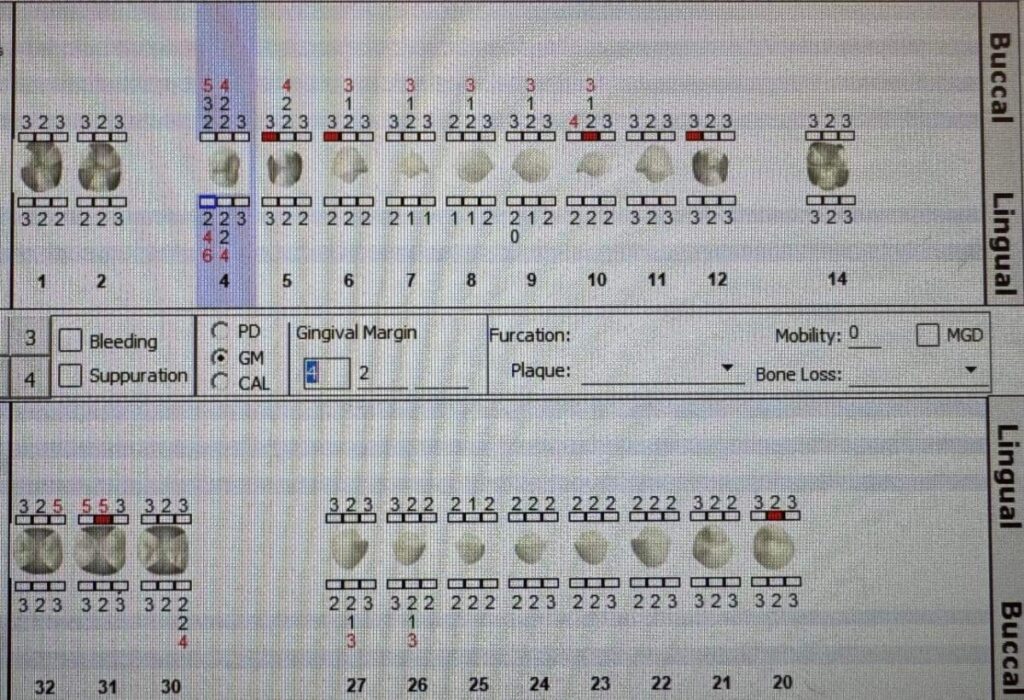
Before treatment.
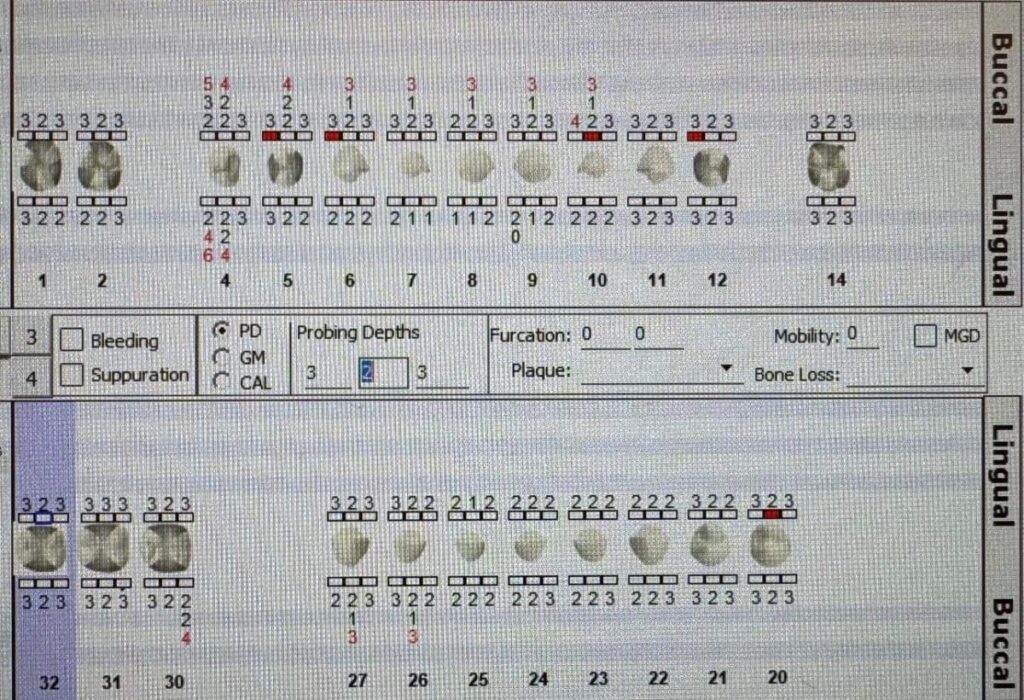
After treatment.
Diagnosis
The patient’s periodontal status is Periodontitis, Stage 3, Grade B with moderate case value, high-risk caries.
Treatment Plan
Based on all assessments, the treatment and homecare plan was developed and discussed with the patient. The patient was given oral hygiene instructions and recommended to use a power toothbrush twice a day by the Modified Bass method, brush for 2 minutes with fluoride toothpaste, perform daily interdental flossing, rinse the mouth twice a day with mouthwash Listerine, and clean the tongue.
Implementation
Hand and ultrasonic scaling were performed on 1 and 4 quadrants during one visit and on 2 and 3 quadrants during the second visit. The patient was approved for treatment with Arestin on-site for a 5 mm pocket depth. Arestin was administered at the site of teeth # 31-DL, and 32-ML after hand and ultrasonic scaling on December 11, 2023.
Evaluation
Re-evaluation sites of teeth # 31-DL (3mm), and 32-ML (3mm) after treatment with Arestin identified a reduction of pocket depth from 5 mm to 3 mm on February 6, 2024. The important goals of treatment with Arestin were to reduce pocket depths and inflammation, aiming to achieve optimal outcomes and prevent further progression of periodontal disease. This comprehensive approach, combining professional intervention with treatment with Arestin, complemented by improvements in daily oral home care practices and regular professional scaling procedures, played a crucial role in maintaining and stabilizing oral health and preventing the progression of periodontal disease.
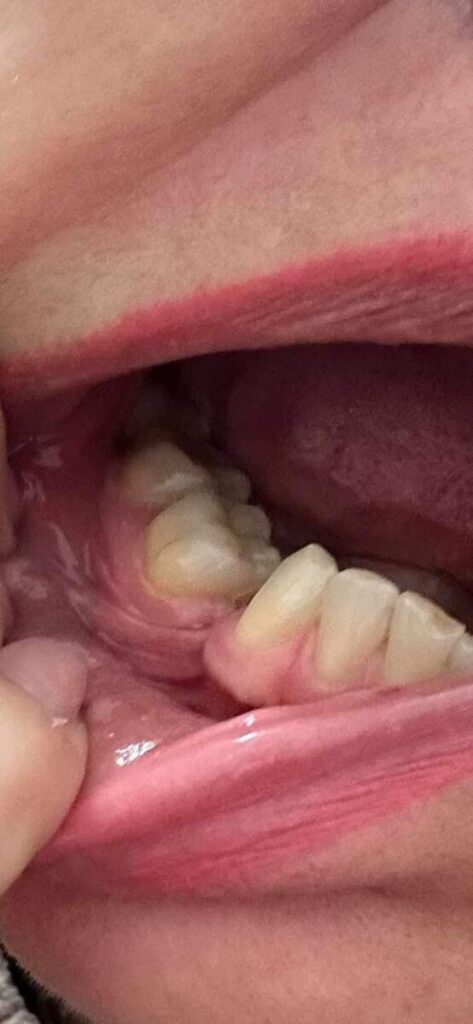
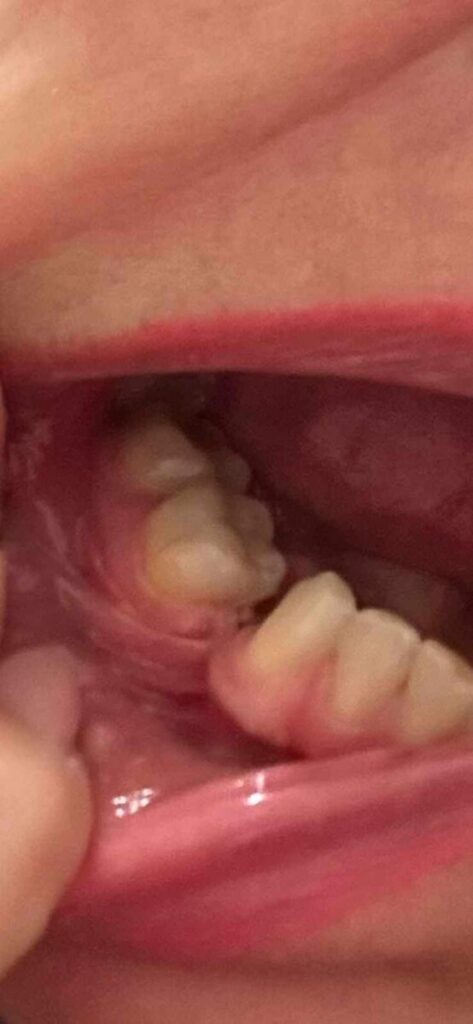
After treatment with Arestin: Before treatment.
visibly less redness and inflammation
in gums, and lighter teeth.


